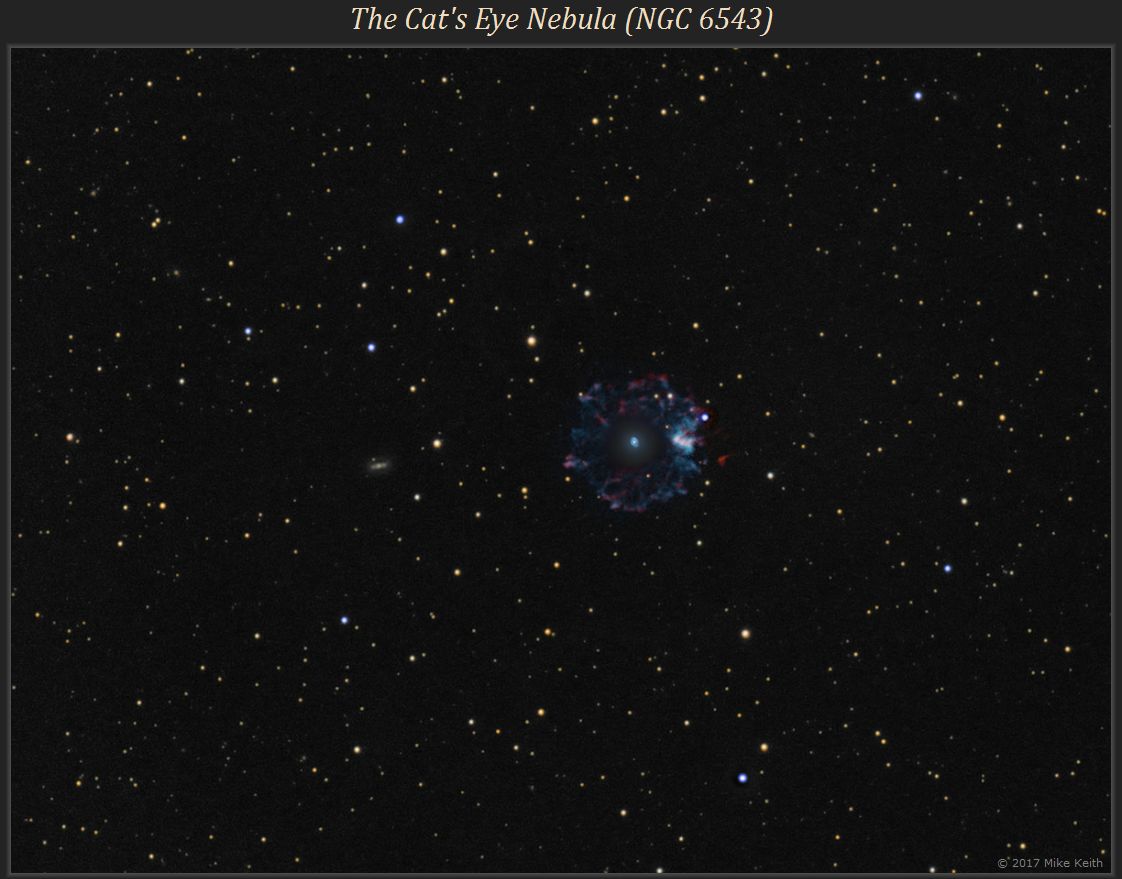
Click here for a higher-resolution image

Click here
for a higher-resolution image
The Cat's Eye Nebula, like all planetary nebulae, is composed of gases emitted into space by a dying star (the small bright thing in the center of the nebula). These gases are primarily red-colored hydrogen and teal-colored oxygen. Besides the bright inner core the Cat's Eye Nebula also has a much larger and fainter outer "shell", although the section of the outer shell at the 3-o'clock position is quite bright and has its own name: IC 4677. To the left of the Cat's Eye is one-arcminute-long galaxy NGC 6552, and there are several dozen more tiny galaxies in this image.
To help capture the outer shell (which, surprisingly, is approximately hexagonal in shape), narrowband H-alpha and O-III exposures were combined with RGB exposures for the stars. Exposure times were Ha:OIII:RGB = 6:6:1 hours for a total of 13 hours.